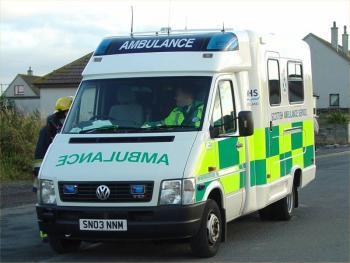Paramedics have required police protection to deal with emergencies at more than 300 properties across the north and north-east of Scotland.
The official figures have revealed there are 197 addresses in Grampian, 113 in the Highlands, nine in the Western Isles and eight in the northern isles which ambulance service crews cannot visit without police back-up.
The combined total for all four of the divisional areas stands at 327. Only Glasgow South West (420), Lanarkshire (418) and Glasgow North East (388) were higher.
The list of 3,036 properties across Scotland deemed unsafe for paramedics in the last three years included 301 in Edinburgh, 159 in Fife and 134 in Tayside.
North-east Labour MSP Lewis Macdonald responded yesterday by saying it was “absolutely right” that paramedics in the region received police protection when they were doing their jobs in “violent” homes.
He insisted there could be “no excuse” for anyone attacking crews while they were attempting to save lives.
>> Keep up to date with the latest news with The P&J newsletter
Mr Macdonald said: “The ambulance service is absolutely right to keep its people safe, in particular when they answer urgent calls from people living in unstable and sometimes violent households.
“Every time emergency service workers are placed under threat, vital resources have to be switched from someone else in need.
“There can be no excuse for those who put the safety of our ambulance workers at risk.”
Conservative MSP and shadow justice secretary Liam Kerr said it was “unacceptable” that the police had to be brought in to defend emergency crews.
He said: “The Scottish Conservatives have been campaigning on this issue for some time. It is completely unacceptable that life-saving ambulance crews need police protection just to do their job.
“We must protect our emergency crews, but we also must ensure offenders are met with the full force of the law.”
Last night, a Scottish Ambulance Service spokesman said the safety of their crews was “paramount” and they should not have to fear for their safety while treating patients.
He added: “Ambulance crews are given training in management of aggression and how to undertake a full risk assessment on arrival at scene to establish if there is any potential danger.
“If any crews feel that their safety may be compromised, they are instructed to wait nearby the scene and await support from the police, or additional ambulance crews.
“Every year, ambulance crews report incidents of physical assault, ranging from pushing and punching to spitting and attack with a variety of weapons.
“They deserve more respect for their dedication to patient care, which is often provided in the most challenging of situations.
“In most of these incidents, alcohol is a key factor in the aggressive behaviour of patients.”
